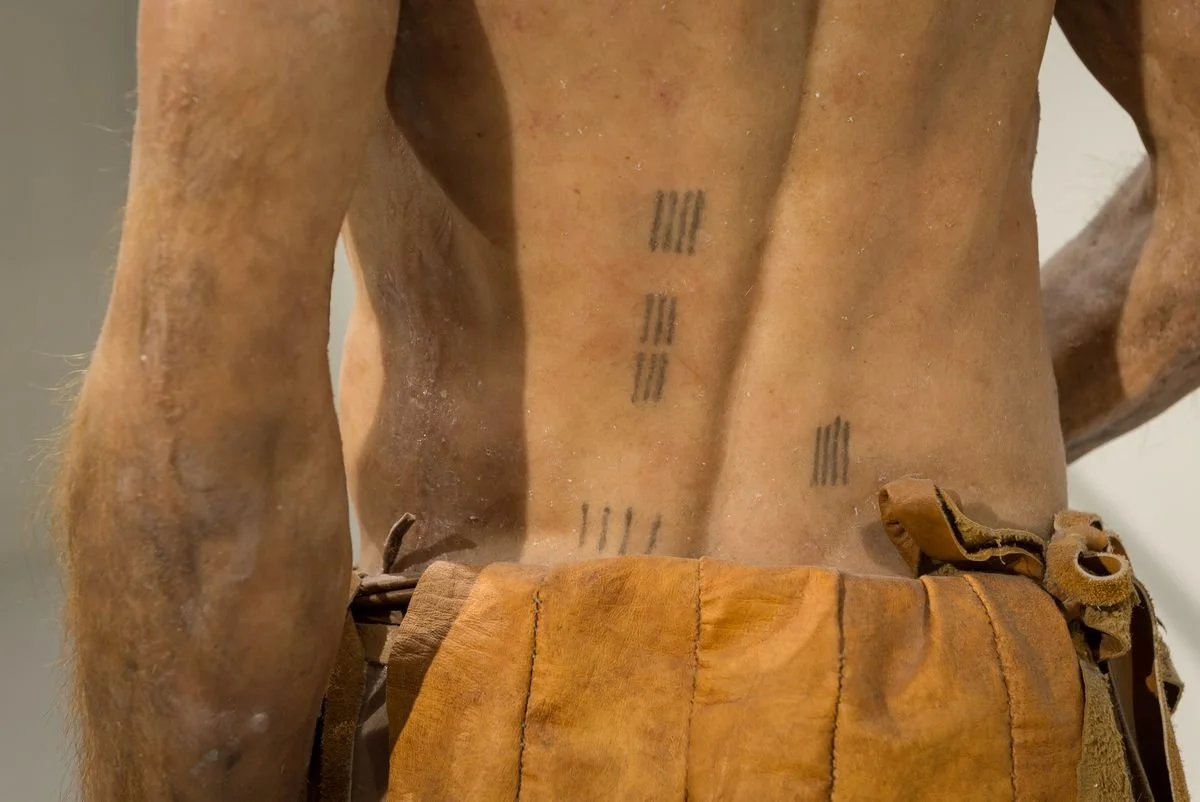Tattoo History | Ötzi The Ice Man | Atlanta Tattoo Shop
Ötzi the Iceman is a very interesting historical phenomenon, accidentally discovered by hikers in the Senales Glaciers in the Ötzal Valley Alps.
Ötzi carbon dates anywhere from 3000-3300 B.C., predating the pyramids and Stonehenge. Undoubtedly Europe’s most famous mummy, Ötzi has a very interesting backstory based on how well preserved his body is and how well maintained his body’s physical features are. The famed mummy died from an arrow wound to the back high in the alpine mountain range, baffling researchers with regard to the details surrounding the unusual moments leading up to his obvious murder. Ötzi is not only Europe’s oldest preserved human specimen, he is one of the oldest preserved humans with tattoos. He is adorned with upward of 60 tattoos, spanning his entire body.
Previously, tattoo scholars were divided: Many believed that a mummy from the Chinchorro culture of South America had the oldest tattoo—a pencil-thin mustache. Recovered from El Morro, Chile, the mummy was believed to be about 35-40 years old at the time of his death, around 4000 B.C.
But after their work, the researchers found an apparent misreading of the Chinchorro mummy’s radiocarbon dating. When a sample of his lung tissue was radiocarbon dated in the 1980s, the date was given as 3830 ± 100 B.P. (Before Present, a time scale used in radiocarbon dating.) However, the researchers surmised there was an error, and the radiocarbon date was recorded as 3830 ± 100 B.C. This error was repeated in subsequent studies, pushing the Chinchorro mummy’s age back about 4,000 years earlier than his actual radiocarbon date, making Ötzi about 500 years (or more) older than the Chilean mummy.
Many of Ötzi's tattoos consisted of lines and hash marks grouped together and concentrated on his spine and legs, and were more than likely applied with some sort of sharpened animal bone, with the pigment being made from ash or soot. Radiologist examinations also suggest that Ötzi may have suffered from a series of strain-induced and/or degenerative diseases, and the placement of the tattoos on his body seemed to indicate the tattoos may have been used for pain relief, similar to practices such as acupuncture. Ötzi’s carbon dating puts him at around 2000 years before the first recorded use of acupuncture.
Although Ötzi isn’t the only mummy to be found with tattoos, he is probably one of the most consequential and oldest discoveries in tattooing’s history, suggesting the diverse use of tattooing in the Bronze Age and, therefore, predating written history.
Consequently, I think at the end of the day, the real question to be asked is: What makes tattooing so ingrained and intertwined with the human experience? What makes us so compelled to mark and adorn our bodies? Is it purely aesthetics, or is there some visceral primal instinct that we cling to?
Written By: Jean-Luc Espinet

